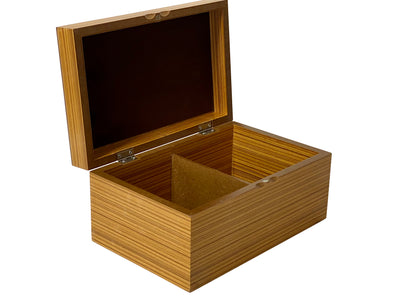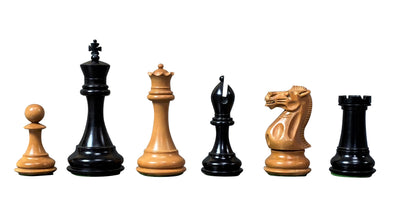The Unsung Heroes of the Board: The Importance of Chess Pieces
Chess is more than just a game; it’s a battle of wits played on an 8x8 board where every move can alter the course of the game. Central to this strategic warfare are the chess pieces, each with its own unique abilities and roles. Understanding how these rosewood chess pieces interact and contribute to the overall strategy can greatly enhance your chess experience. In this article, we'll delve into the importance of chess pieces, their roles, and how mastering them can elevate your gameplay.
A Brief History of Chess Pieces
The origins of chess trace back to ancient India, where the earliest forms of the game were played. Over the centuries, the design and materials used in chess pieces have evolved significantly. Today, one of the most sought-after materials for chess pieces is rosewood due to its rich hue and durability.
Chess pieces made of rosewood not only offer a luxurious aesthetic appeal but also deliver specific gameplay benefits. As we explore their importance, it’s essential to understand the historical context to appreciate their roles better.
The Chessboard: A Stage for Strategy
Before diving into the roles of each piece, it’s important to highlight the chessboard on which they operate. The 64 squares create a dynamic playing field that influences how each piece moves and interacts. The arrangement of pieces in the starting position sets the stage for myriad strategies and tactics, paving the way for an exciting game.
The Essential Roles of Chess Pieces
Each chess piece is crucial within the game, performing specific roles that contribute to a winning strategy. We can divide the chess pieces into two categories: major pieces and minor pieces, each with its distinctive characteristics.
The Major Pieces: Kings and Queens
The most powerful pieces on the chessboard are the king and queen. Their unique roles create fascinating dynamics during play.
Understanding the King
The king is the most critical piece, as the game revolves around protecting it. If the king is checkmated, the game is over. Despite its limited movement (one square in any direction), the king plays a vital role in endgame scenarios, where its protective capabilities become increasingly important.
Importance of the Queen
In contrast to the king, the queen is the game’s most formidable offensive piece. With the ability to move any number of squares in any direction, the queen can dominate the board, controlling key squares and supporting other pieces in attacks. Mastering the queen’s role is essential for mounting successful offensives and launching counterattacks.
The Power of the Minor Pieces: Knights, Bishops, and Rooks
The minor pieces include the knights, bishops, and rooks. Each has unique strengths that can either enhance your strategy or foil your opponent's plans.
The Knight's Unique Movement
Knights are unique in their movement, jumping over other pieces in an “L” shape. This ability makes them excellent for surprising opponents and navigating tight spaces. Their role is pivotal in attacking and defending various positions on the board.
The Bishop and its Diagonal Reach
Bishops are known for their long-range capabilities, moving diagonally across the board. Each player starts with two bishops, one for light squares and one for dark squares. This allows for versatile board control, making them pivotal in long-range attacks and positioning strategies.
The Rook: A Tower of Strength
Rooks move horizontally and vertically, making them crucial for controlling open lines and driving forward in the endgame. Their synergy with the queen can be a game-changer, often leading to pure tactical brilliance.
The Importance of Pawn Structure
While often underestimated, pawns are the backbone of any chess strategy. They may be the weakest pieces on the board, but their key roles cannot be overlooked.
Pawn Advancement
Pawns control the centre and dictate the pace of the game. Advancing pawn structures can support the development of your major pieces and create opportunities for attacks. However, their value lies in potential promotions. When a pawn reaches the eighth rank, it can transform into any piece, typically a queen, changing the game dynamics entirely.
Combining Forces: Piece Coordination
The real beauty of chess stems from the interaction between pieces. Effective piece coordination is crucial to developing a strong strategy. Rosewood chess pieces, known for their aesthetic worth and quality, can serve to remind players of the artistry involved in coordinating their movements.
Creating Synergy
To create significant advantages, players should focus on piece synergy. For example, positioning knights near bishops can create potent threats against an opponent’s formation. A well-placed rook behind a pawn can also contribute to a potential breakthrough, while the queen provides central support to both major and minor pieces.
The Psychological Aspect of Chess Pieces
Beyond their physical attributes and movements, chess pieces carry a psychological weight. Understanding your opponent's perception of your pieces can provide insights into their strategy.
Deception and Misdirection
Using your pieces for misdirection can lead your opponent into making blunders. Strategic positioning of rosewood chess pieces can create illusions, prompting adversaries to underestimate certain threats, thus enabling you to enhance your tactical options.
The Aesthetic Appeal of Chess Pieces
Among chess enthusiasts, rosewood chess pieces hold a special place. The aesthetic beauty they bring to the board elevates not just the game but also the overall experience of playing. Their rich grain and deep colours enhance the visual appeal, making each match feel like a classic duel of intellect and artistry.
Building a Collection
A collection of high-quality rosewood chess pieces is not only a statement of elegance but also aids in fostering a more enjoyable game experience. The look and feel of quality pieces can instil a sense of pride and respect for chess as a timeless game.
Learning and Growth Through Chess Pieces
For aspiring chess players, understanding the roles of chess pieces isn’t just about knowing their movements; it’s about developing a strategic mindset. The more experience you gain interacting with rosewood chess pieces and their unique roles, the better equipped you will become to navigate complex positions.
Practical Exercises to Enhance Your Understanding
- Opening Strategies: Focus on developing your pieces effectively during the opening phase. Pay attention to controlling the centre with your pawns and placing your knights and bishops on active squares.
- Endgame Mastery: Study common endgame scenarios with various pieces to understand how they can work together to achieve victory.
- Tactics and Combinations: Solve tactical puzzles that require you to utilise specific pieces efficiently, sharpening your overall game sense.
Raise the Stakes: Importance of Chess Pieces in Competitive Play
In competitive chess, grasping the importance of each piece and its role can be the difference between victory and defeat. The pressure of matches and the high stakes demand an understanding of both strategic and tactical play. Players must adapt their strategies based on their opponent's use of pieces, making awareness crucial during gameplay.
Adapting to Opponents
Understanding your opponent's strengths and weaknesses is just as essential as knowing your own pieces. Observing their use of rosewood chess pieces and adapting your strategy will enable you to maintain an edge in competitive scenarios.
Elevate Your Game with the Right Mindset
The importance of chess pieces goes beyond their functionality on the board; it extends to the mindset of the player. Cultivating patience, foresight, and adaptability will enhance your appreciation of every piece’s role. Embrace learning and growing with each game, allowing your experience to enrich your understanding of chess and its elegant complexities.
Ultimately, every chess piece, whether a knight or a pawn, plays an essential role in achieving victory. By mastering their functions and learning to work cohesively with rosewood chess pieces, you can transform your gameplay. So, dive deep into the fascinating world of chess, keep practising, and let each move you make resonate with strategy, thought, and victory!









